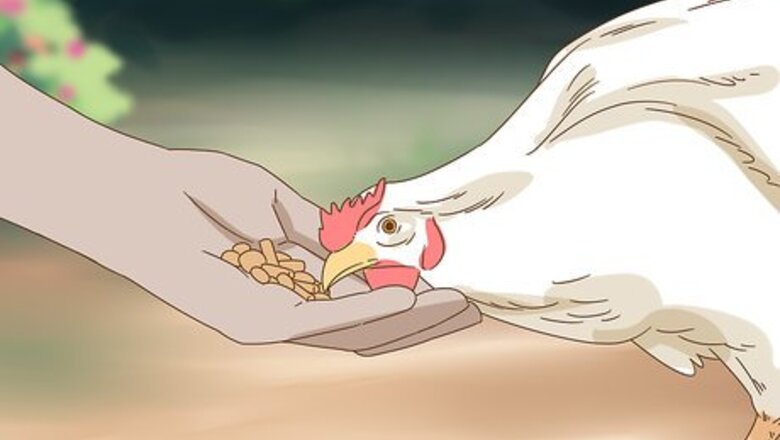
views
Picking up a Chicken

Train your chicken to come to you using treats. Bring a few chicken treats into the pen or coop with you like mealworms, dry cereal, or watermelon. Offer the treat from your palm and stay very calm and relaxed while your chicken eats. If your chicken is too afraid to come near you, encourage it by placing treats on the ground leading to you. Wait until your chicken is calm and comfortable being close to you before trying to pick it up. Avoid chasing your chicken, as this can make it stressed and sick. Training your chicken to come to you makes the handling process a lot easier!
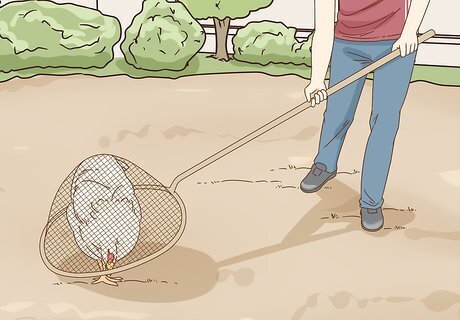
Use a net to catch your chicken if it isn't trained. Sometimes you need to be able to catch your chicken quickly. Get a large fishing or pool skimming net and hold the net on the ground in front of your chicken. As your chicken steps on the net, gently lift it up to catch your chicken. Alternatively, you can try to drop the net over your chicken. However, this may be more difficult.

Place your dominant hand on your chicken’s back to secure its wings. Slowly and calmly stretch out your dominant hand towards your chicken. Place your palm firmly on its back and keep your hand steady to prevent your chicken from flapping.
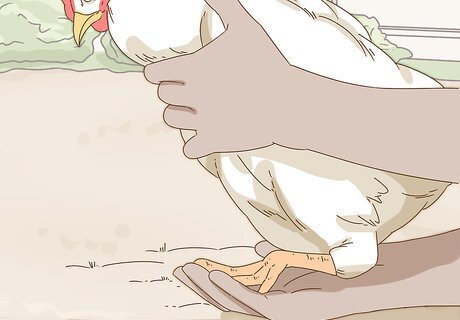
Place your other hand beneath your chicken to secure its legs. Keep your dominant hand firmly on your chicken’s back and gently reach underneath, just down from the breast. Rest your palm against the breast and position your middle finger between its legs, with your other fingers around the outside of each leg. Try to keep the weight balanced on your palm and thumb. This keeps your chicken safe and prevents it from kicking.
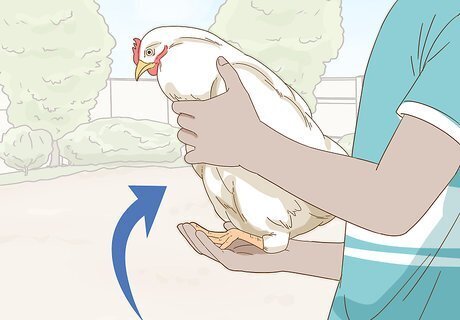
Lift your chicken gently off the ground. Use your hands to support your chicken's body and make sure to move slowly so that it doesn't get stressed. You may feel your chicken try to move its wings or legs slightly as it is lifted. Don't worry, as this is a natural response.
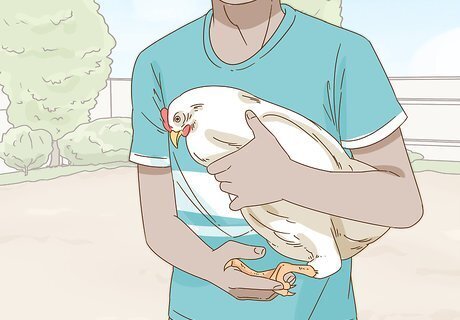
Hold your chicken against your body to keep it safe. Either hug your chicken against your chest or between your ribs and upper arm. Keep your palm between your chicken’s legs to keep its legs secure. If you are holding your chicken against your chest, gently rest your dominant hand on the wing that's not touching your body to keep it still. If you are holding your chicken between your ribs and upper arm, its wings will already be secured. It’s important to keep your chicken from jumping or flapping, as it can easily get injured. Hold your chicken firmly so that it can't move, but also gently so it doesn’t feel squashed.
Handling and Releasing a Chicken
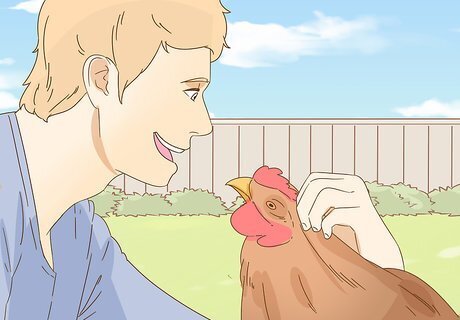
Pet and talk softly to your chicken to keep it calm. When your chicken is securely held, gently stroke its back feathers. Speak softly to your chicken so it can hear the sound of your voice. Create a positive and trusting relationship with your chicken to help it get used to being held.

Inspect your chicken's feathers for parasites. When holding your chicken, gently part its feathers and begin looking over its skin for any signs of parasites. Common parasites include poultry lice and fleas. Poultry lice lay clumped, white eggs and fleas are small, brown, and jumpy. Contact a veterinarian if you have any cause for concern to get advice and treatment.
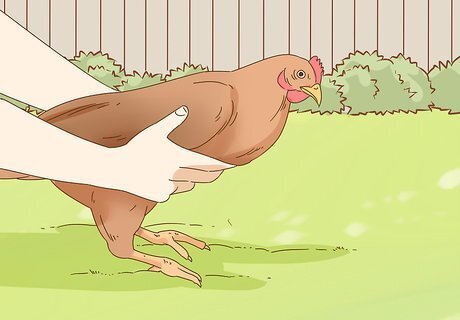
Place your chicken directly on the ground to release it. Lift your chicken away from your body, still keeping its wings and legs secure. Make sure that its feet are properly on the ground before you let it go. Remove your hands slowly and calmly, and let your chicken back into the pen or coop.
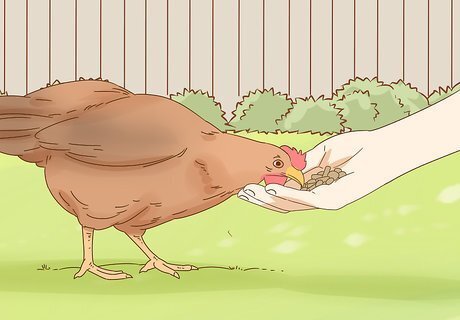
Give your chicken a treat as you place it back on the ground. Place another treat in the palm of your hand and offer it to your chicken once the handling is done. This helps to create a positive association with being picked up! Try to offer treats whenever you handle your chicken to build a trusting bond.

















Comments
0 comment